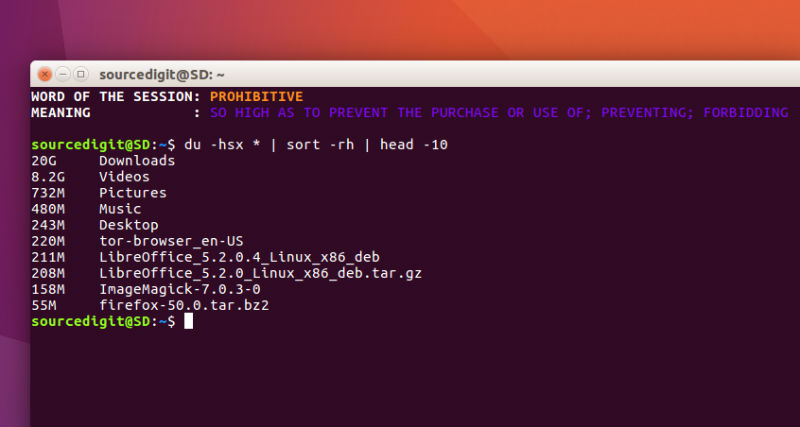Find the largest top 10 files and directories on Linux Ubuntu. How to
find large files in Linux in / file system. On Linux, find largest file
in directory using terminal command.
du Command is a great tool to find out the disk usage or files and directories on Linux Ubuntu Systems. Du command summarize disk usage of each FILE, recursively for directories.

To display the largest directories in the current working directory:
To display the largest folders or files including the subdirectories:
-hsx : (-h) Human Readable Format, (-s) Summaries Output, (-x) One File Format, skip directories on other file format.
sort : Sort text file lines.
-rh : (-r) Reverse the result of comparison, (-h) for compare human readable format.
head : output first n lines of file.
a : Displays all files and folders.
-n : Compare according to string numerical value.
-r : Reverse the result of comparisons.
-n : Print the first ‘n’ lines.
du Command is a great tool to find out the disk usage or files and directories on Linux Ubuntu Systems. Du command summarize disk usage of each FILE, recursively for directories.

Find Largest Files/Directories In Linux Ubuntu
To display the largest top ten files or directories:
$ du -hsx * | sort -rh | head -10
To display the largest directories in the current working directory:
$ du -a /home | sort -n -r | head -n 10
To display the largest folders or files including the subdirectories:
du -Sh | sort -rh | head -10
Explanation of Commands and Options
du : Estimate file space usages.-hsx : (-h) Human Readable Format, (-s) Summaries Output, (-x) One File Format, skip directories on other file format.
sort : Sort text file lines.
-rh : (-r) Reverse the result of comparison, (-h) for compare human readable format.
head : output first n lines of file.
a : Displays all files and folders.
-n : Compare according to string numerical value.
-r : Reverse the result of comparisons.
-n : Print the first ‘n’ lines.






0 comments:
Post a Comment
Note: only a member of this blog may post a comment.